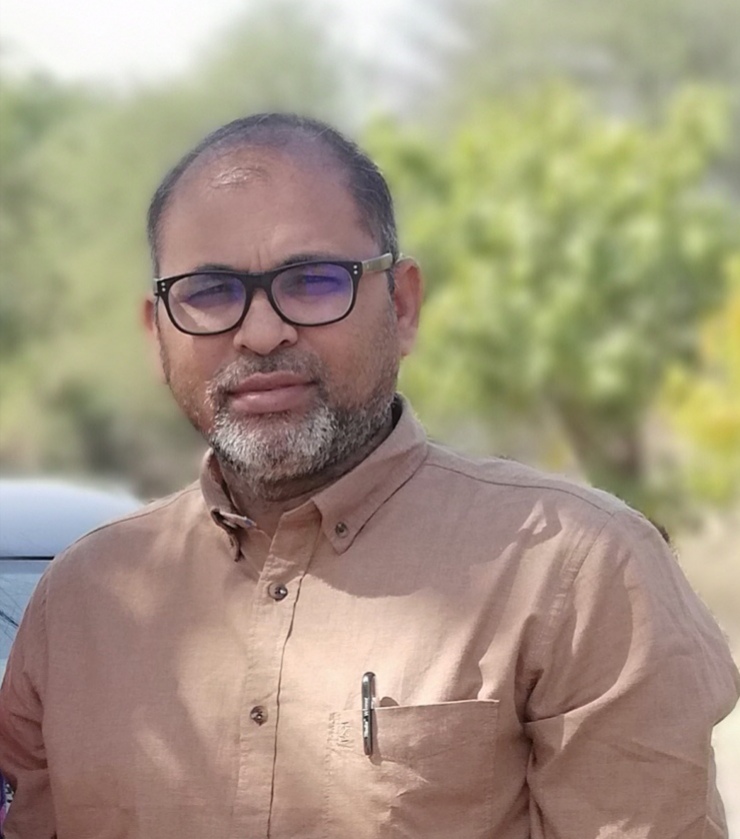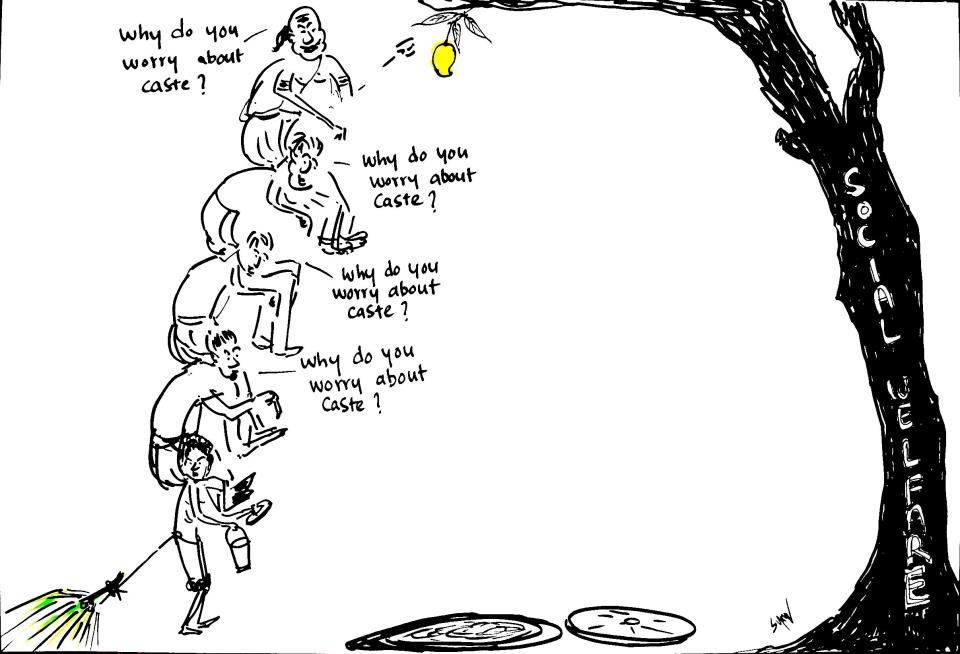Bhangya Bhukya
 After the 13th February 2019 Supreme Court judgment on the Scheduled Tribes and Other Traditional Forest Dwellers (Recognition of Forest Rights) Act of 2006 (FRA) there was a nationwide outrage, particularly on social media. But the outrage evaporated soon as the country went into election mood. India is a huge country and things are blurred so fast as every day witnesses one or the other carnage. Yet, the Adivasis who have been criminalised with the judgement did not attract the attention of any political parties. Everybody has now forgotten the wound caused to the Adivasis, but there is still unrest in the forests of India.
After the 13th February 2019 Supreme Court judgment on the Scheduled Tribes and Other Traditional Forest Dwellers (Recognition of Forest Rights) Act of 2006 (FRA) there was a nationwide outrage, particularly on social media. But the outrage evaporated soon as the country went into election mood. India is a huge country and things are blurred so fast as every day witnesses one or the other carnage. Yet, the Adivasis who have been criminalised with the judgement did not attract the attention of any political parties. Everybody has now forgotten the wound caused to the Adivasis, but there is still unrest in the forests of India.
What has been published so far in print media and academic journals on the judgement have failed to capture the problem with the whole issue of Adivasi forest rights. The problem, I think, is not with the judgment per se but with the so-called FRA itself. In the judgement, the Court directed the state governments to evict Adivasis whose claims were rejected. As reported in the petition by the wildlife protection NGOs, 23.5 lakh claims were rejected out of the total 44 lakh claims. It seems only 20.5 lakh claims were settled under the Act.
The FRA was indeed enacted to undo the historical wrong done to the Adivasis under the British colonial rule. Unlike the pre-colonial state, the colonial state had controlled the forest through various regulations and Acts. This stopped Adivasis from having free access to resources and evicted them from their land by force. However, the process of dispossession of the Adivasis was full of tension as the communities evaded it.
The denial of forest rights to Adivasis further continued even in post-colonial India. Rather a more stringent system was practiced to check Adivasi movements in the forest. There was some intervention by the Indian government in the 1980s to restore Adivasi rights over forest resources through joint forest management project, but this project failed in many respects. Importantly, the legal protective mechanism was itself against the Adivasis as it promised only restricted freedom or restricted use of forest resources.
The Wildlife Protection Act of 1972 brought further pressure on the Adivasis. Particularly the Wildlife (Protection) Amendment Act of 1982 made Adivasis criminal or illegal inhabitants in their land overnight. Under this act, a large number of Adivasis were driven out of the forest evicting them from their land. This made the Adivasis more vulnerable.
The dispossession of the Adivasis had severe effects on their health conditions. They became susceptible to chronic diseases as well as all epidemics such as cholera and malaria. Diet and nutrition studies had brought out their deteriorating health condition. A study carried out by the National Nutrition Monitoring Bureau in 1998-99 (see Diet and Nutritional Status of Tribal Population Report) suggested that about 72 percent of Adivasi children underweight. The study also observed 79 percent of malnutrition among the school going children. The study shows glaring facts on the Adivasi physical conditions such as 63 percent of stunting, only about 50 percent males and 43 percent females had normal Body Mass Index (BMI), while 49 percent males and 55 percent females had chronic energy deficiency. During the 1980s and 1990s, some sociological studies indeed ventilated the acute impoverishment of the Adivasis. Particularly, newspapers highlighted the starving deaths in Adivasi areas. In Odisha, 75 percent of Adivasis lived below the Poverty Line in 2005.
These glaring facts led the Indian government to enact the FRA of 2006 which ensured Adivasi rights in land and over minor forest resources or non-timber resources. What is offered to the Adivasis under this Act was very limited. They were given restricted access to the resources. The preamble of the FRA cautioned the authorities that care should be taken for sustainable use, conservation of biodiversity and maintaining ecological balance. Although Section 3 of the Act ensures a long list of rights to Adivasis, they are limited on the name of critical wildlife habitats, National Parks and Sanctuaries.
The implementation of the FRA is very lamba choda. The process is initiated by the Gram Sabha when an Adivasi or hamlet claims a piece of land or forest resource before it. Then it is forwarded to the Sub-Divisional committee and then to the District level committee. Even when the Gram Sabha recommends the claim, the Sub-Divisional or District level committees can withhold it.
The tricky part of the FRA is that the burden of proof is put on the Adivasis. He or She has to prove that their family is living in a forest or depending on the forest for generations. At least one has to prove that his/ her family lived in the forest before independence. An Adivasi can choose any proof listed in the Act including the colonial census and ethnographic notes. The fact is that we do not have exact statistics of the Adivasis even now. It is evident that at the time of independence we could list out only 354 Adivasi communities this has now gone to 705. Importantly, the Adivasis were till recently moving from place to place. From where or which domicile certificate can the produce? It is because of this difficulty, more than half the claims were rejected.
Also, it is held that Adivasis’ presence in forest induces Maoist politics, as many of them act as Maoist sympathisers. Many a time the police department influenced the forest and revenue officials to evict Adivasis from their land on this ground. Of course, the latter officials are equally apathetic to the Adivasi cause. The FRA is primarily aimed at ensuring Adivasi collective forest resource rights, habitation rights for most ‘primitive’ groups and conversion of forest villages into revenue villages in their respective areas spreading over 85.6 million acres of Indian forests. But, the Act saw its implementation only in 3 percent of the proposed area. The poor implementation of the Act in the last 12 years reflects the state’s indifferent attitude towards the Adivasis.
The recent high-level committee report on the status of ‘tribes’ of India chaired by Prof. Virginius Xaxa has ventilated very disturbing data on the condition of Adivasis or indigenous people of India. According to this report, the Adivasis stand at the bottom in all development indicators. It is reported that compared to all other Indian communities, Adivasis witnessed the highest illiteracy, highest school children dropouts, high malnutrition and underweight infants, high morbidity and mortality rate, acute poverty, high rate of unemployment and seasonal migration, higher hunger deaths, and low political participation. What is revealing from this report is there is a mismatch between what is taken away from the Adivasis by the Indian state and what is offered to the Adivasis.
The Adivasis were often blamed for ruining of the forest. This myth is very strong among the forest officials from the colonial period. The fact is that the forest was being ruined only when the state had started governing it. The state from the colonial times saw the forests as just quasi-economic entities that earned revenue for the treasury. This decrease was brought about through the commercial exploitation of forest resources, the state land tenure system and the commercialisation of agriculture. Corrupt forest officials, forest contractors, and urban timber smugglers cleared the forest. The state’s dubious conservation project itself caused a rapid decline in the forests in many respects. The Adivasis had been maintaining ecological balance in the forest through their social and religious traditions. The concept of sacred places and hills/mountains were historically very crucial in maintaining ecological balance in the region. Every Goddess and God of the Adivasis was associated with a particular animal and plant. Also, every Adivasi clan is named after an animal or tree. And no Adivasi kills or harm the animal or tree associated with their clan or God and Goddess. Many Adivasi communities do not pluck fruits from the tree; they collect it only when it falls down. They worship trees; they do not cut it.
As has been brought out in recent studies that the forests of South Asia have a wide variety of historical meanings and usages. They serve as homes and sources of livelihood for their inhabitants, as well as of fuel, building materials, famine foods, and medicines for neighbouring people. They provide a home for bandits and rebels, and equally an obstacle to invasion and expansionist ambitions of the state. They accommodate wild animals and nurture disease environments that were often fatally inhospitable to outsiders.
What the Adivasis do not understand is why should they prove their domicile now when they have been living in the forest for centuries. If the Indian government really wishes to undo the historical wrongs, it should allow the Adivasis to use forest resources freely without any legal frames. Then we need to think of Adivasi collective rights beyond the state legal framework which would ensure them free use of resources in forest and hill. Restoring the lost ground to Adivasis is important to overcome their postcolonial predicaments.
~~~
Prof. Bhangya Bhukya teaches history at the University of Hyderabad, Hyderabad. He studied at
University of Warwick, UK, for his Ph.D, and he was a British Council Visiting Fellow at SOAS,
University of London. His most influential works on Adivasi society includes Subjugated
Nomads, The Lambadas under the Rule of the Nizams (New Delhi: Orient Blackswan, 2010), The Roots of the Periphery, A History of the Gonds of Deccan India (New Delhi: Oxford University Press, 2017). Recently he has published History of Modern Telangana (Hyderabad: Orient Blackswan, 2018). He is also a public intellectual involved in adivasi and dalit-bahujan movements in India.










